The Best Cask-Finished Irish Whiskies
Celebrate Ireland’s rich whiskey legacy with these incredible spirits.

The Irish invented whisky in the 14th century, and even until the late 1800’s held claim to the most popular spirit in the world. Blows like the World Wars, a trade war with the United Kingdom and proliferation of cheap grain-infused product devastated the industry, however, decimating Irish distilleries from thousands to just three; soon their whiskies were usurped globally by counterparts in Scotland, America and Canada.
Still the fighting Irish endured, and if it seems like lately the category is buzzing again in the zeitgeist you’re not alone — Irish whiskey is currently the fastest growing whiskey category in the world.
Most browns from the Emerald Isle are approachable because of how gentle they tend to be, largely from the fact that they are triple distilled. This accessibility makes them very popular, but also scrutinized by those who might prefer a more challenging profile like those found in single malts across the North Channel in Scotland.
Picking up on the scotch-pioneered trend of “cask finishes” — aging their spirit in a second (and sometimes third) cask after initial maturation — Irish whiskies are now adding complex and nuanced flavors to rival the best whiskies found anywhere.
Here, some of the top cask-finished Irish whiskies that are worth tippling right now.
Tipperary Boutique Distillery ‘Cask RC103 Single Cask Release’
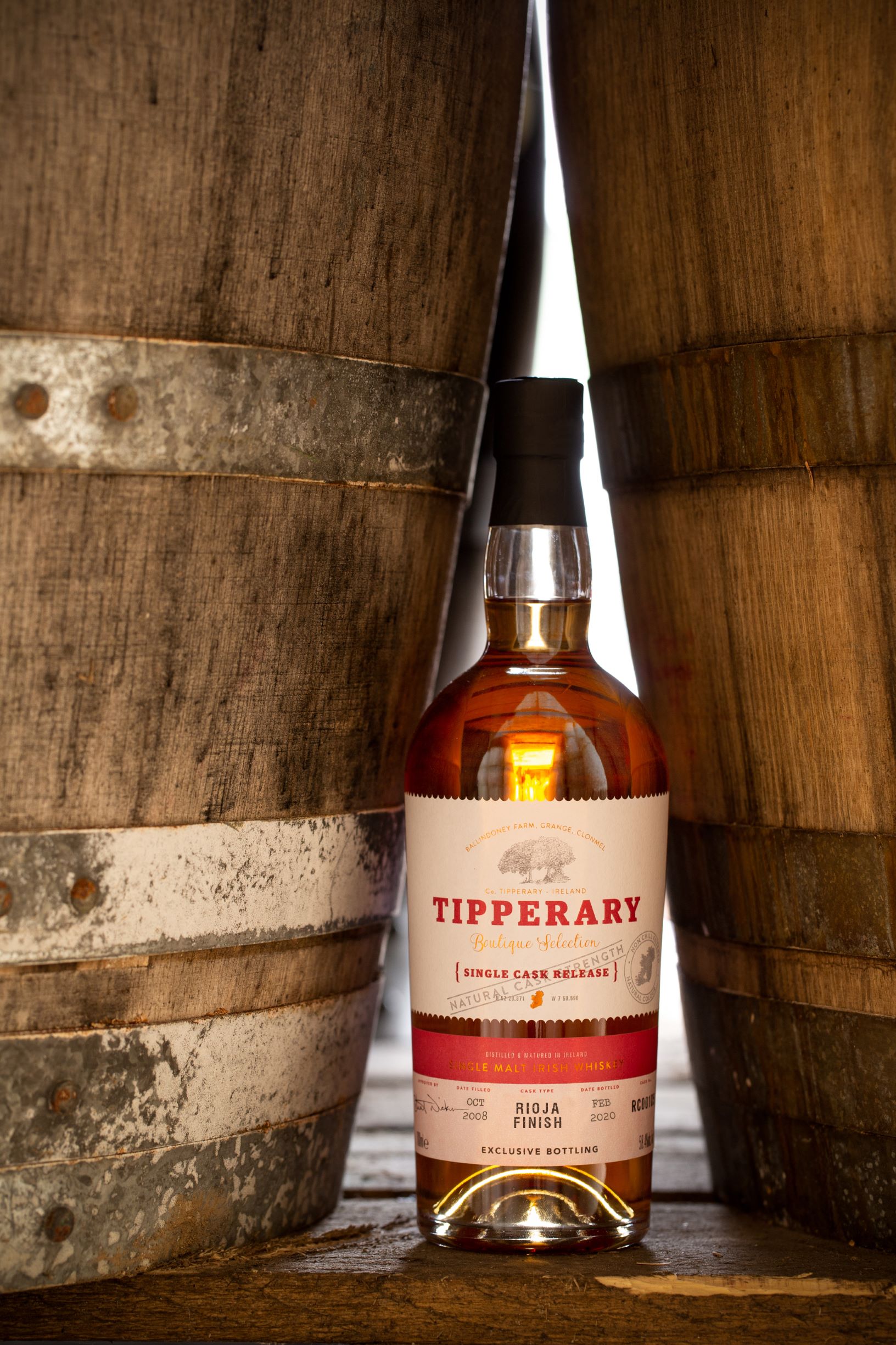
While the Tipperary Boutique Distillery has been distilling their whiskey with their own homegrown barley at other Irish distilleries since 2017, the trio (husband, wife, wife’s dad) just opened their own building on the family barley farm in November. This will now be true farm-to-bottle Irish whisky, grown from seed to spirit to barrel to bottle all on their Ballindoney estate.
Master Distiller/Dad Stuart Nickerson — who’s managed superb distilleries like Highland Park, Glenrothes, The Balvenie and Glenfiddich — double distills several expressions like their Homegrown Single Malt, Watershed and various single cask bottlings ranging from 10- to 18-years-old. They’ve even elevated the concept of transparency by adding a QR code to every bottle which leads buyers to a website disclosing everything about that whiskey, from the day it was sown to bottled.
“We’re hoping for a good reaction to the level of information we’re supplying via the QR code,” co-owner Jennifer Nickerson tells us. “There seems to be a lot of interest in terroir and transparency in the industry right now and this is why we exist, so we’re really hopeful that this resonates.”
On top of their core line Tipperary has been releasing a very limited edition annual collaboration with vintner Bodegas Faustino — a centuries-old Rioja winemaker and one of Spain’s leading exporters of Gran Reservas. Bodegas Faustino donate their Rioja barrels to Tipperary who fill them with their single malt, already aged for 11 years in Jerez sherry butt, and then let it sit for another two years.
The resulting Irish whisky picks up rich cherry notes from the Rioja wood, adding uniqueness to an already exclusive offering (fewer than 300 bottles released worldwide). Tipperary’s Watershed or Homegrown Barley Single Malt make fine alternatives if you can’t find this rare single cask.
Rioja: $140, Watershed: $50, Homegrown Barley Single Malt: $100
Knappogue Castle ‘Marchesi di Barolo Cask’
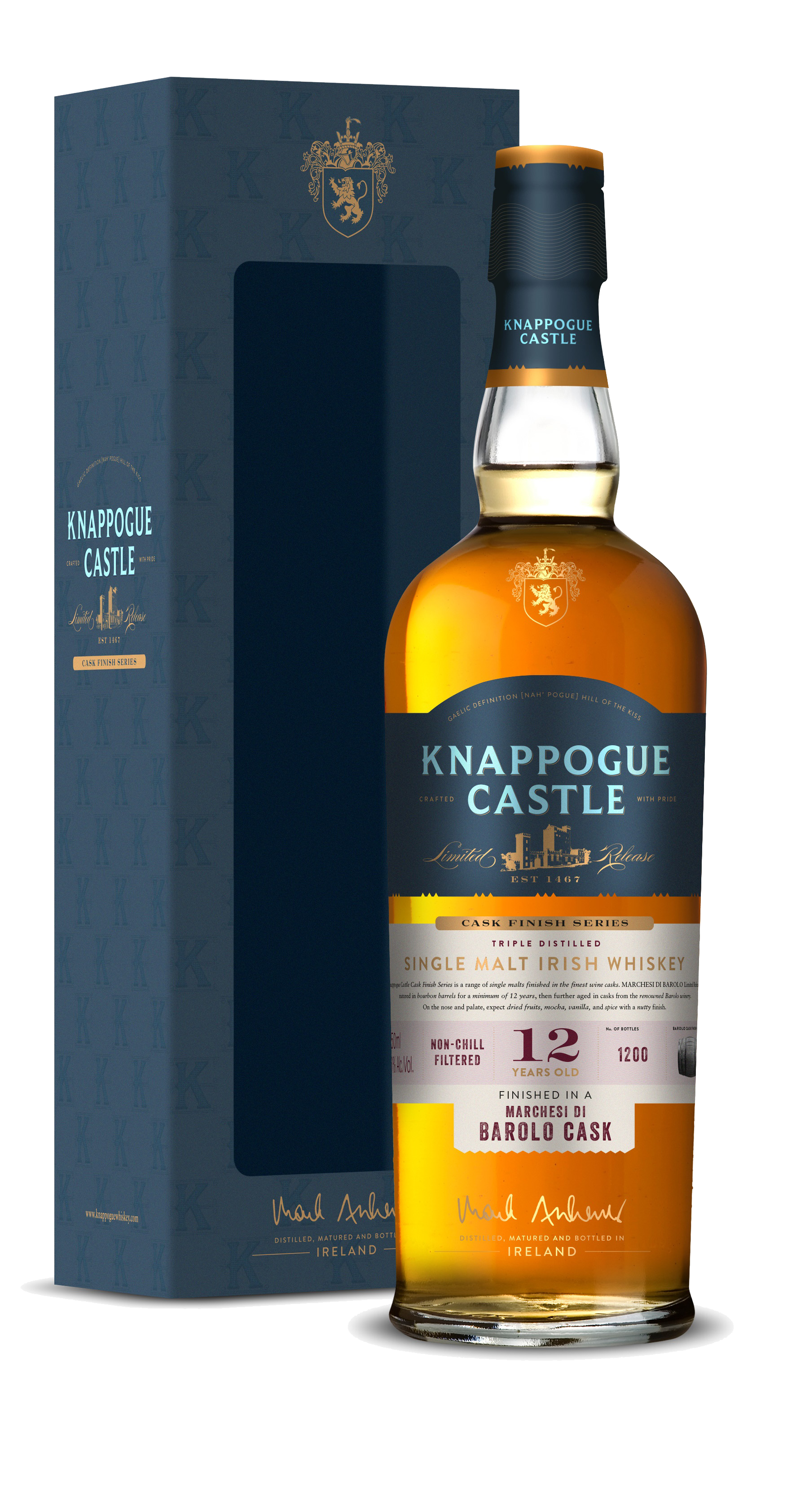
Launched in 1998 to honor the literal castle he bought in the 1960s, American entrepreneur Mark Edwin Andrews’ Knappogue Castle Irish whisky is triple-distilled, one batch at a time in copper pot stills. The third iteration in their new Cask Finish Series takes their classic single malt — bottled at 92 proof and aged in bourbon barrels for at least 12 years — and finishes it in Marchesi di Barolo casks.
Located in the foothills of the Alps, wines from Barolo are known for their harmony, fragrance and ripeness, and thus Knappogue Castle promises you can expect “aromas of strawberries, cinnamon buns, banana fritters and caramel toffees,” with a corresponding palate of red apples, berry fruit and red cherries. With only 1,200 bottles of the Marchesi di Barolo Cask available, it might be tough to find — of course not quite as tough to find as their Knappogue Castle 1951, the oldest Irish single malt you can buy. $80
Method and Madness ‘Chestnut Cask’
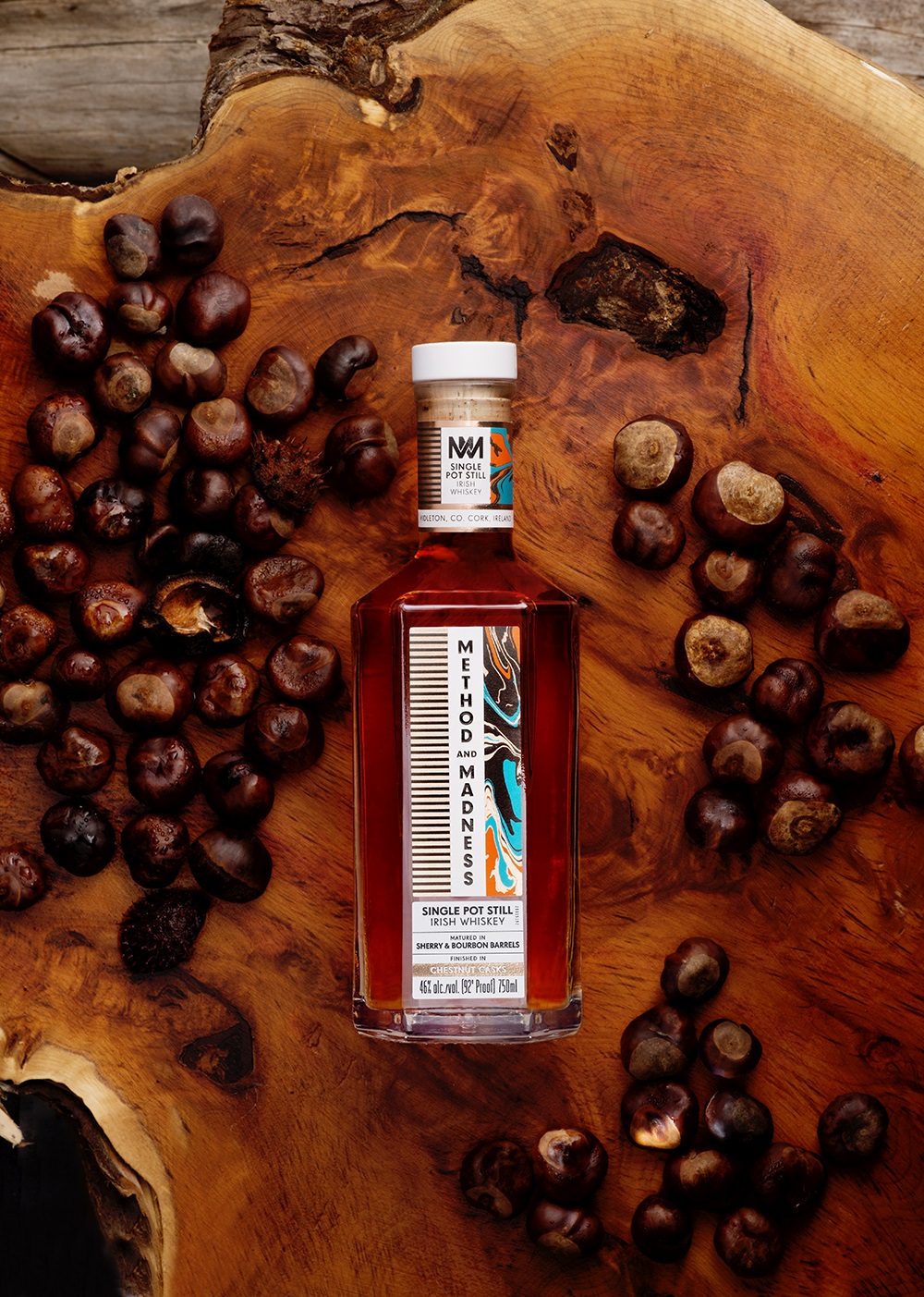
What do you get when the giant in the field, Jameson, decides to go experimental and open an anything-goes micro-distillery at their famous Midleton home base? Why the aptly named Method and Madness. As the country that invented whiskey tradition is super important in Ireland, however sometimes tradition can become a shackle that imprisons true creativity. And that’s where M&M comes in, offering a lab where both veteran distillers and wet-eared apprentices can throw the die and explore what’s possible within the parameters of Irish Whiskey.
The first wave of M&M included limited-edition expressions finished in virgin Galician oak, French Limousine oak and French chestnut casks. This latter was our favorite: it began life as a single pot still brown maturing in a combination of ex-Oloroso sherry and ex-bourbon barrels, before being transferred to chestnut casks sourced from the Isére region in France. The first whiskey to use this finishing wood, the chestnut cask adds a gorgeous, deep mahogany hue while imbuing the flavor with notes of cinnamon toast, ripe banana and even a touch of red Twizzlers. Coming this year are two more expressions finished in very rare acacia and wild cherry wood — we’ll be looking out for sure.
$90
Writers’ Tears Marsala and Mizunara Copper Pot
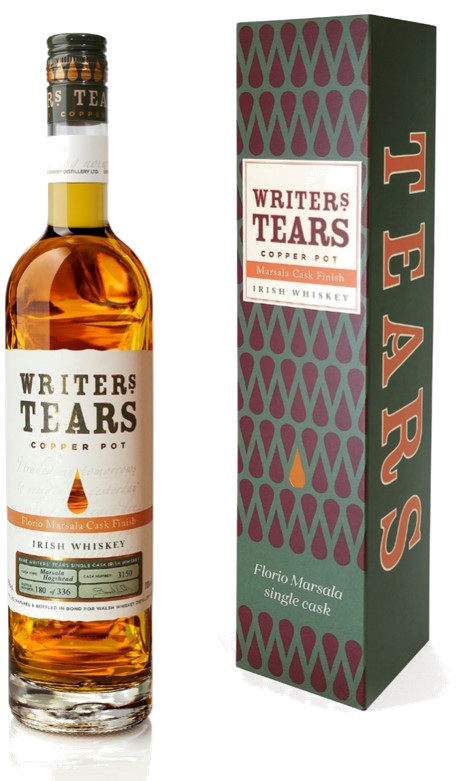
Known as The Land of Saints and Scholars, Ireland is unsurprisingly home to some of the best writers the world has ever read. The list is long and whiskey-soaked, and hence the poetically named Writers’ Tears resonates with Irish whiskey fans worldwide. Launched in 2009 to celebrate the “golden era of Irish Whiskey, pot still distillation and its deep, lasting bond with creative thinkers and artists that defined Irish culture in the 19th and early 20th centuries,” Writers’ Tears marries aged single pot still and single malt Irish whiskey for their expressions.
Of the two limited-edition expressions in their Copper Pot line of cask-finished expressions, Marsala and Mizunara, we only tried the former. Using Marsala ‘hogshead’ casks imported from Sicily’s Florio winery, the traditional triple distilled, non-peated barley (both malted and unmalted) Writer’s Tears whiskey aged an additional year in those five wine hogsheads to lend the Irish whiskey flavors of caramelized apple, nutty spices and wildflower honey.
$85
Tullamore D.E.W. Cider Cask Finish
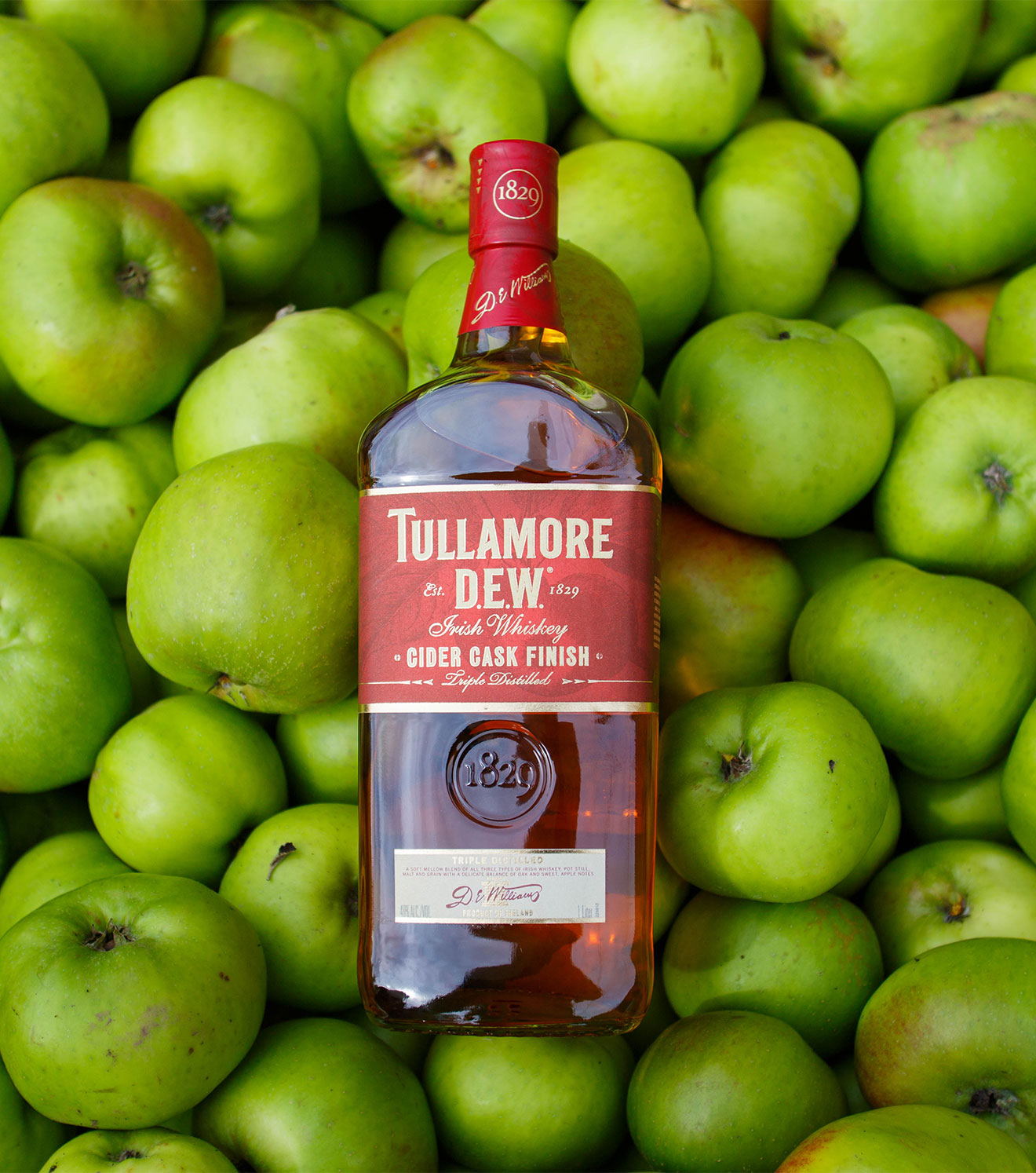
While many of these options are very limited and on the upper price end, Tullamore D.E.W.’s Cider Cask Finish offers not only terrific bang for the buck, but also a truly unique twist on Irish whiskey. Tullamore starts with their Original Triple Blend — the first to blend grain, malt and pot still whiskey — and then pours it into casks used for making hard apple cider. Tullamore claims this is the first whiskey in the world, Irish or otherwise, to be finished this way.
The centrally located distillery’s already smooth whiskey earns a wisp of green apple crispness and a slightly more golden hue. Perfect with a bit of soda for effervescence or even some top-shelf apple juice and ice. Since barrel availability is highly dependent on the seasonal Irish apple harvest Tullamore D.E.W.’s Cider Cask Finish is only made between September and November each year, so stock up.
$30
Dublin Liberties Whiskey ‘Murder Lane’ 13 Year Old Tokaj Cask
Named after The Liberties — a historic working-class hood in central Dublin renown for whiskey distilling, the Guinness Brewery and all around mischief — Dublin Liberties Whiskey takes great pride in manifesting their roots into its line of prestige single malts.
Their Murder Lane is aptly named after a nefarious, unmarked alleyway connecting James and Bow Street infamous for, well, lots of stabby murder (Dublin lore claims many a man, woman and child met their unfortunate curtain call there in the 17th century). Dark, yes – but a compelling name for a compelling whiskey that starts life as an Irish single malt aged 13 years in American oak.
The whiskey is then finished in rare Hungarian oak casks used to age Tokaj, a sweet Hungarian dessert wine, for another six months. The resulting brown is blessed with a subtle taste of ripe apricot and white peach, with just a hint of coconut.
$90
Jameson Caskmates IPA + Stout Edition
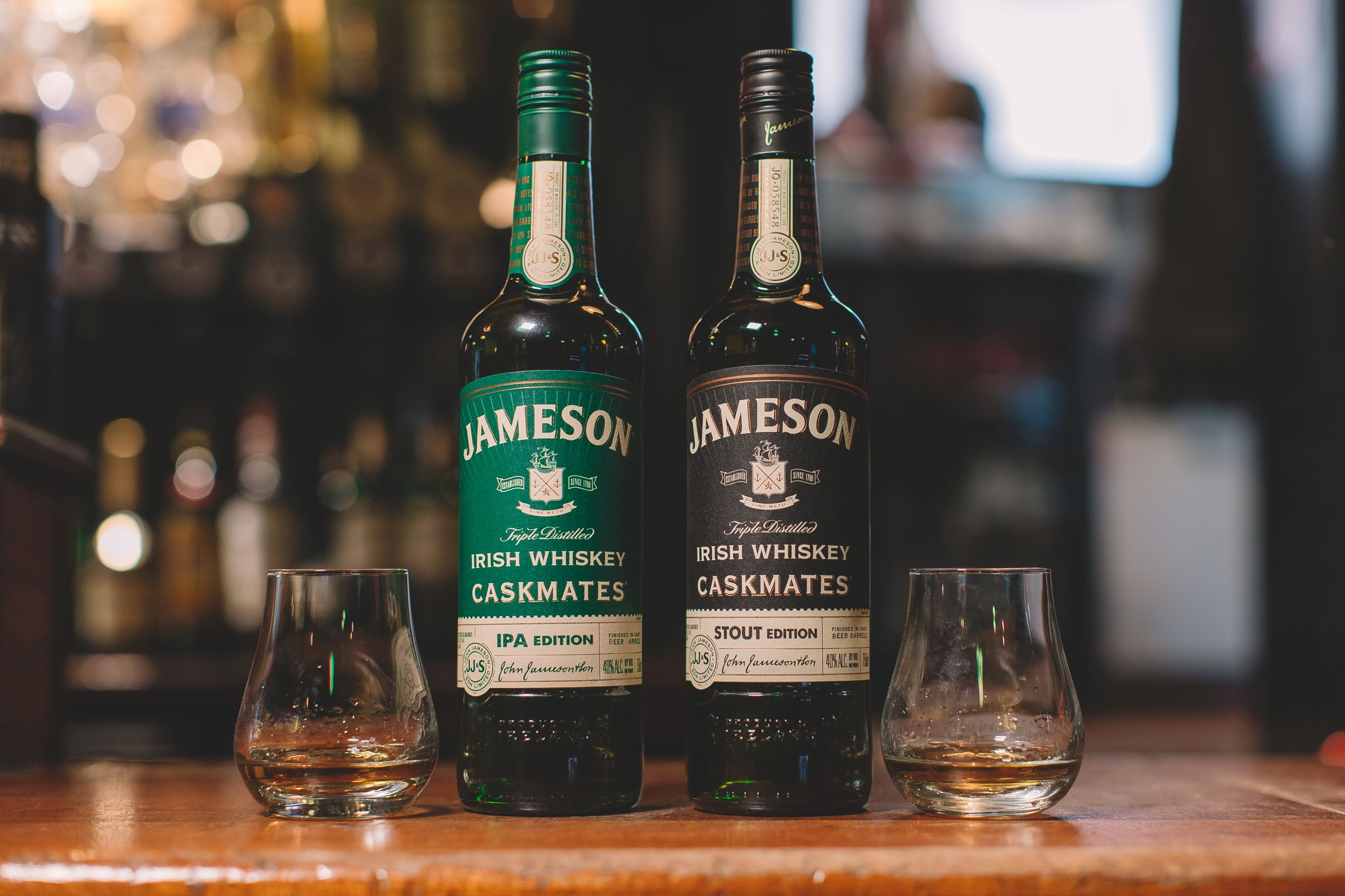
As a true volume spirit it’s tough to complain about Jameson. Like an old friend, Jamo is reliable, consistent and always there— from dusty roadhouse to dark dive bar to pretentious cocktail temple. Their Caskmates line improves on Jameson’s warm fuzzy sweater comfort by finishing their famed triple-distilled blended Irish whiskey with an additional 3-6 months in local craft beer-seasoned barrels.
Choose either IPA or Stout, to us they were both delicious and very easy on the palate (and wallet). Both embody a whiff of hops, but whereas the Stout leans towards a nutty/cocoa finish the IPA offers more green apple, pear and orchard fruit notes.
$37
The Tyrconnell 16 Year Old Oloroso & Moscatel Cask Finish
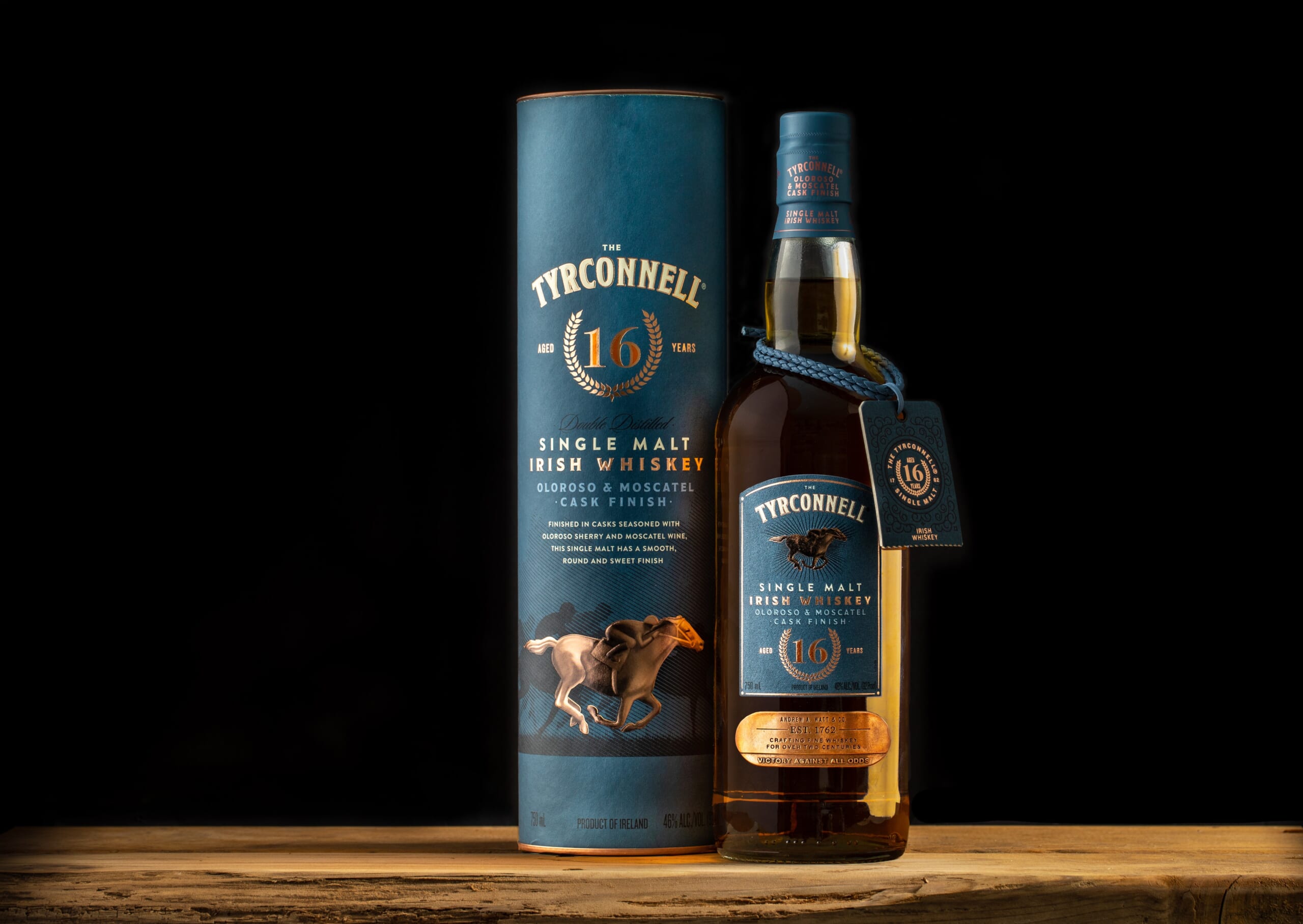
Kilbeggan offshoot The Tyrconnell is renowned in Ireland for its single malts, which are double distilled — retaining more flavor than their triple-distilled Irish whiskey counterparts — in the foothills of the Cooley Mountains. While The Tyrconnell produces a trio of 10 Year Old cask-finished expressions (Madeira, Sherry and Port Cask) to consider, the oldest and most exquisite of their cask finished offerings is a 16 Year Old finished in Oloroso and Moscatel casks.
After 16 years resting in American White Oak ex-bourbon barrels their pot still single malt is transferred for a second maturation in singular Andalusian wine casks — wood which first held Oloroso sherry before aging Moscatel wine after. These special casks add sweet notes of honeysuckle, champagne and jasmine to the already well-rounded whiskey. Definitely a sipping whiskey to be enjoyed neat or on the rocks.
$100
Redbreast Lustau
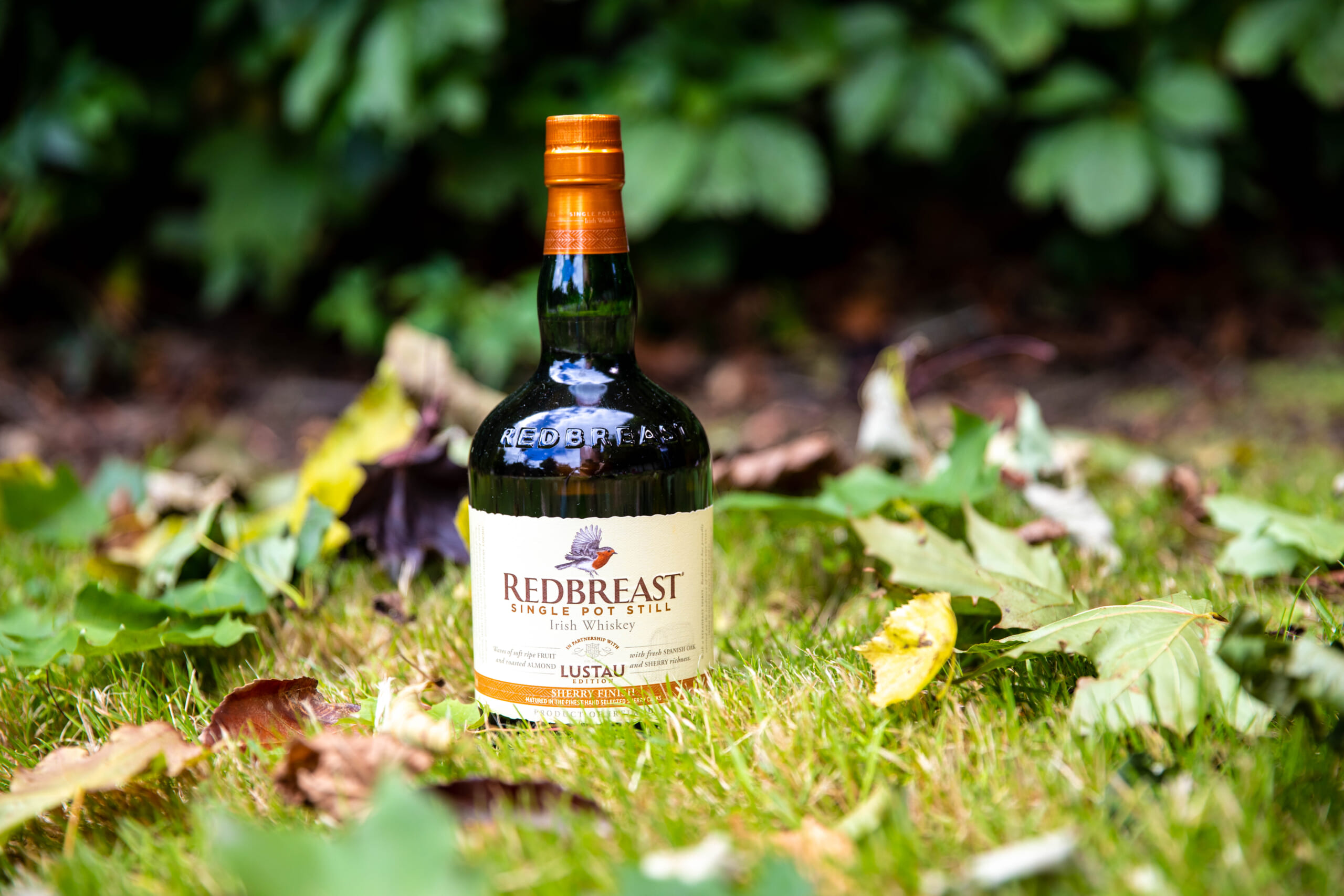
While Redbreast is crafted in the same Midleton Distillery as Jameson it has its differences from its globally famous cousin — such as using both malted and unmalted barley, all 100% distilled in copper pot stills.
After aging in a combination of both bourbon and sherry casks for a dozen years, the whiskey is then transferred to sherry casks plucked from the Bodegas Lustau vineyard in Jerez, Spain, where it finishes its aging. The resulting liquid is a unique take on the widely respected Redbreast label.
$69
West Cork Distillers Glengarriff Bog Oak + Stout Cask Finish
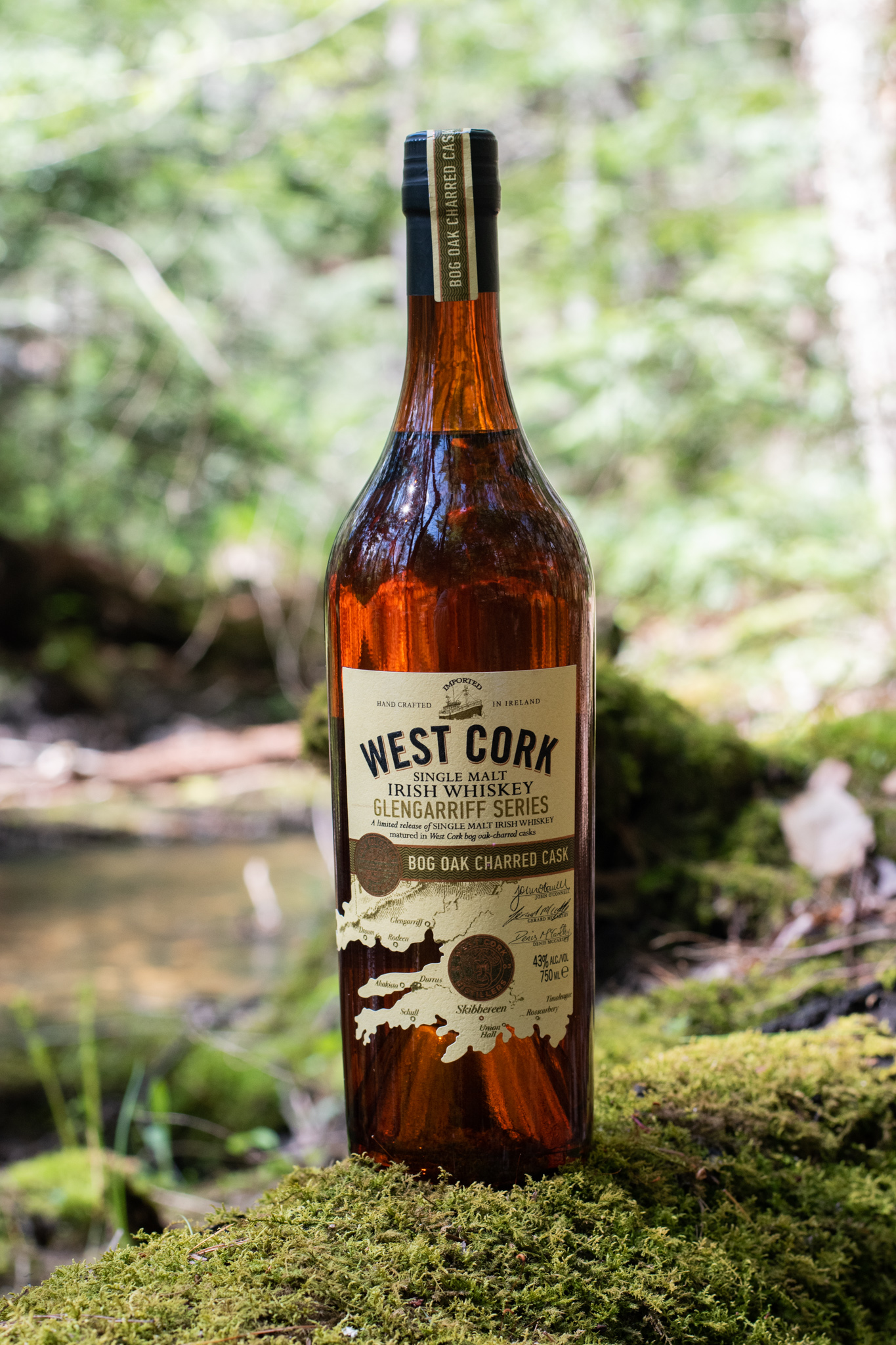
Located on the southern edge of the Emerald Isle, West Cork Distillers’ Glengarriff Series takes their single malt — aged for 4 years in sherry casks — and finishes it for another 4-6 months in barrels charred using Bog Oak sourced from the nearby Glengarriff Forest. Using a proprietary charring device hand-built with the guidance of a local fifth-generation blacksmith, these natural bogland fuel sources lend the wood unique flavors for the serious whiskey nerd explorer: think spice, cracked pepper and even dried leather.
Another option from WDC is a collaboration with their Cork brewery neighbors Blacks of Kinsale to create a new Stout Cask Finish whiskey. The liquid begins as a 75/25% blend of grain and malt whiskey which ages for a full four years in first-fill bourbon casks.
That’s where Blacks of Kinsale come in, who lend WDC casks which held their coveted Stout beer — aging the Irish whiskey for another 6 months to pick up additional notes and flavor profiles. Expect whiffs of chocolate, raisins and cracked nuts to the nose, and additional flavors of coffee, dark chocolate and vanilla. This new Stout Cask Finish joins WCD’s IPA Cask in their special range, limited to only 9,400 bottles. Stout Cask Finish: $32, Glengarriff Bog Oak: $40
Bushmills 28 Year Old Single Malt Cognac Cask
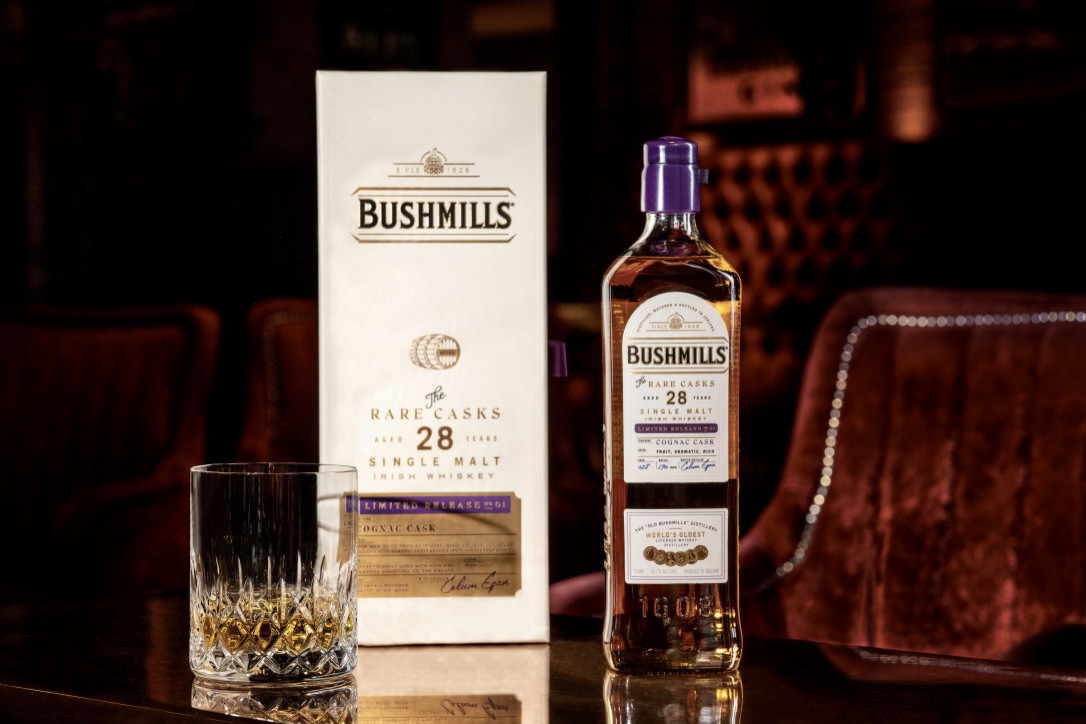
Without question the most elevated of the bottles listed here, Bushmills offering on this list is an Irish whiskey of exquisite provenance. With over four centuries of experience distilling whiskey, the oldest licensed distillery in Ireland is launching a new annual series dubbed “The Rare Casks” and they selected a nearly three-decade old single malt to mark its debut.
Bushmills 28 Year Old Single Malt Cognac Cask started life as whiskey rested in either ex-bourbon or sherry barrels for 11 years before they were all married, and then the blend transferred to Cognac casks where they aged another long 17 years — all guided, from distillation to bottling, by Irish whiskey’s first female Master Blender Helen Mulholland. The complexity of this spirit is noteworthy, the cognac lending the 28 Year Old Single Malt’s aroma a spice from nearly two decades in wood, with a flavor profile of pear, warm vanilla and dried fruit. Fewer than 500 bottles will make it Stateside so it may be hard to find anywhere. $500
Honorable Mentions
Blue Spot Single Pot Still Whiskey
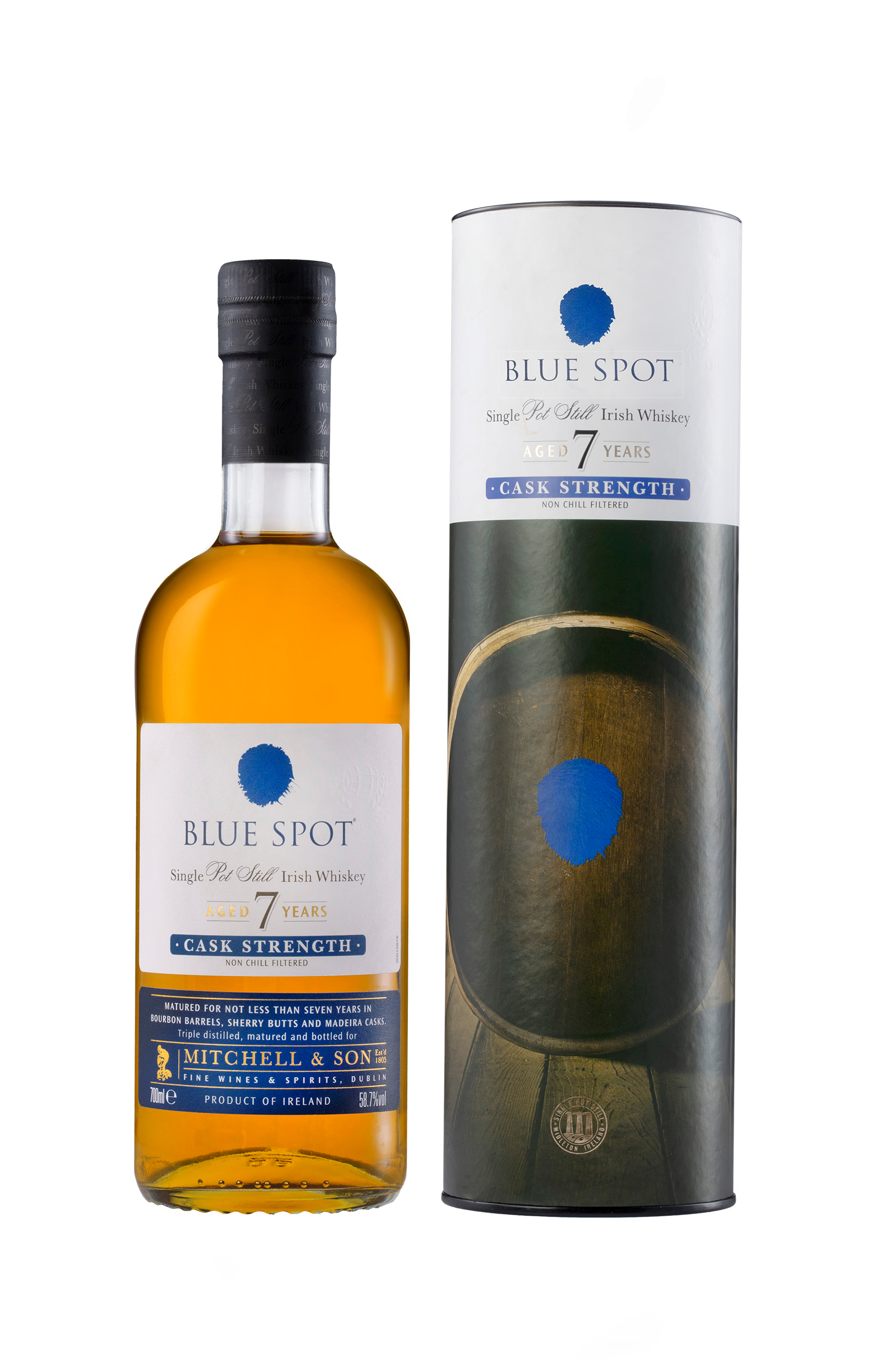
While Blue Spot doesn’t have a cask finish expression per se, their Irish whiskey is made with a combination of rare casks that pay tribute to the old tradition of whisky bonding. Meaning when a second independent entity would buy whiskey from a distillery and use it to create their own blends.
Think Redbreast (owned by Gilbey’s) in Ireland, or Scotland’s Johnny Walker, Dewars and Gordon & MacPhail. Bonders would mark barrels with different color spots (or dashes) to denote how many years they were meant to be aged — blue for 7 years, green for 10, yellow for 12, etc. — hence this collaboration with Ireland’s last remaining wine merchants and whiskey bonders the Mitchell family.
The 7th generation family shop’s Blue Dot whiskey is fittingly aged a minimum of 7 years in a combination of ex-Madeira, ex-Bourbon and ex-sherry casks (the Madeira Cask apparently can be as old as 20 years) and then blended to create a truly unique Single Pot Still Whiskey.
$85
The Fighting 69th
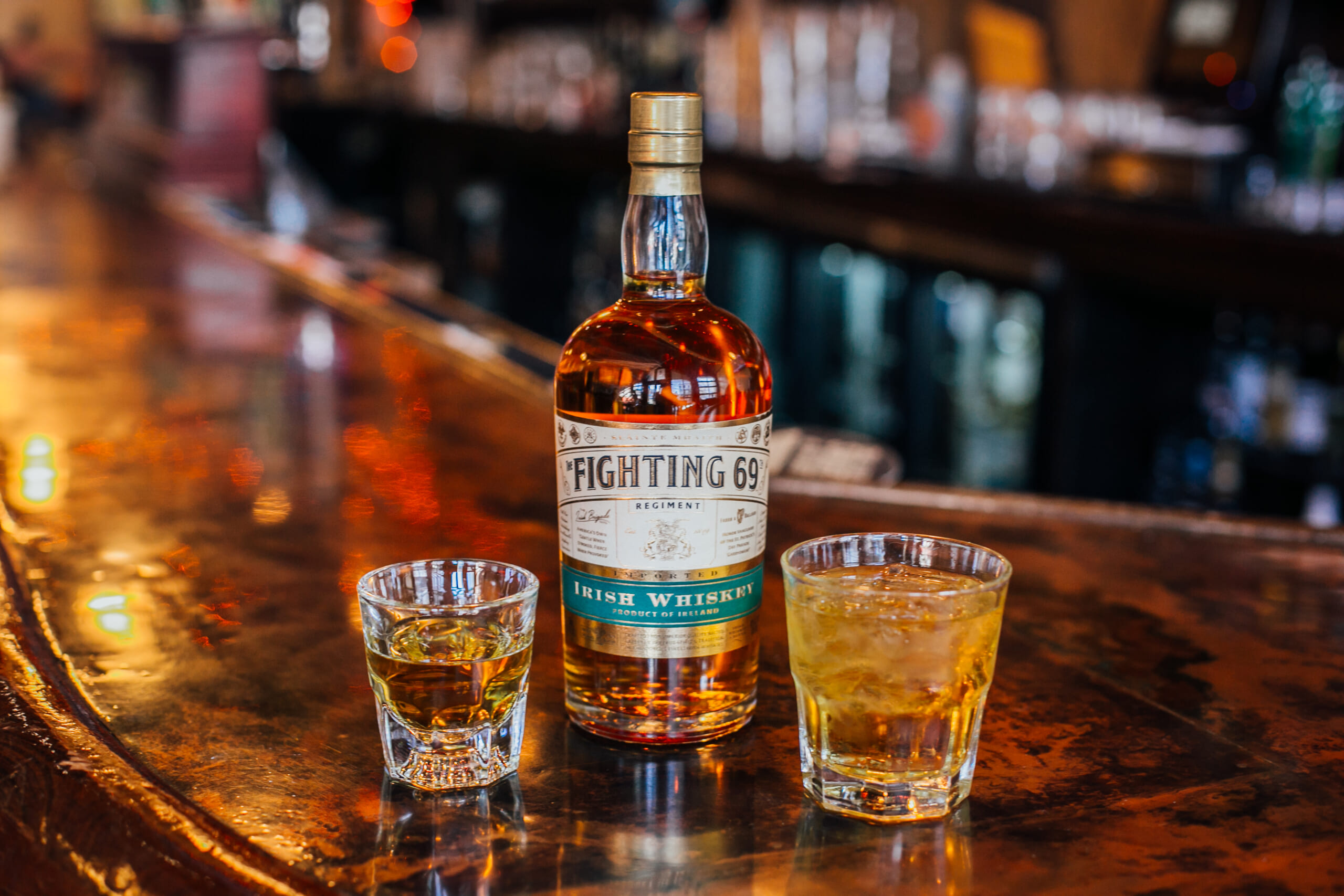
The Fighting 69th was named in homage to New York’s 69th Regiment, one of the oldest and most honored military units in America. Founded in 1849 as the first Irish-American regiment, the 69th actually started life as a local militia in the hopes of returning to the homeland to kick the Brits out of the Emerald Isle. They’ve since fought in five wars and countless campaigns, and have led New York’s St. Patrick’s Day parade for over a century.
The Irish whisky baring its name triple-distills a variety of mash bills in handmade copper pot stills and then ages the white dog for three years in ex-bourbon casks. All the juice is then divvied up and aged for a second time in a variety of other casks — including Single- and Double-Char, Oloroso Sherry, Rum and Port casks — and is then artfully blended to create an imminently drinkable Irish whisky. A twist on the idea of marrying before finishing, the variety of nuanced casks creates a truly unique Irish whiskey for the price — and as added benefit, they give back to veterans with every bottle sold. $38
